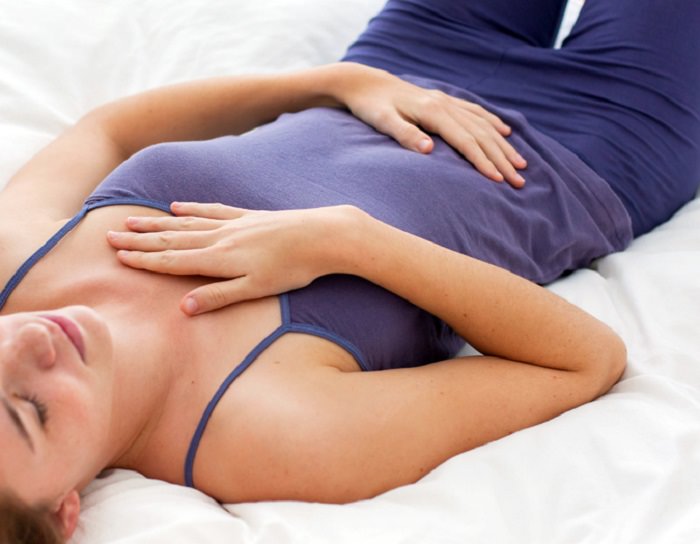How Well You Breathe, has an Effect on your Health
|
Relaxing techniques through breathing exercise. You can learn from Vighnesh K.V. through video session. 'Conscious breathing heightens awareness and deepens relaxation'
|
Five seconds ago I wasn’t consciously aware of my breath, until I read this quote. Upon doing so, it got me thinking that when it comes to certain body functions, we rarely give them much thought at all: digesting food, our heart beating, breathing - our bodies tend to manage all of these functions without us having to be consciously aware of the need to do so. Even when such systems are not working as efficiently as they should be, we don’t take any notice, and the act of breathing - something we do thousands of times every day - is a great example of this.
|
|

|
The average person generally takes a little over 17,000 breaths per day, and when done correctly, proper breathing has a number of benefits:
|
- It provides sufficient oxygen to every cell in the body. In fact, without sufficient oxygen, the cells cannot metabolize food properly and so nutrients, including vitamins and minerals, are often wasted.
- It allows the body to rid of carbon dioxide.
- The brain also requires a rich supply of oxygen, which in turn improves concentration and general clarity of thought.
- It improves stress management and the ability to handle complex situations more effectively.
- Mindful breathing detoxifies and releases toxins, as well as tension.
- It relaxes the mind and body, and relieves emotional tension and pain.
- Conscious breathing elevates moods.
- It also improves the nervous system and strengthens the lungs.
- Mindful breathing helps lower blood pressure and boosts energy levels, improving stamina.
- Quality of blood is also improved as is the strengthening of the immune system and the heart.
|
Still, for most of us, our breathing has become habitually restricted in various ways, and we are not even aware of it. This, more often than not, lies in our posture. Slouching positions diminish our lung capacities causing our breaths to become shorter and more shallow, with breathing only derived from the upper chest. We therefore end up by using just a small fraction of our lung capacity. In contrast, when we are relaxed but don't slouch, the free and easy expansion and contraction of the lungs, diaphragm, ribcage and spine is enhanced during breathing, thereby increasing the volume of air that we inhale or exhale.
|
So, to help you reap in the benefits of conscious breathing, we recommend you try these top three breathing exercises, starting with the 'Deep, Full Breath', before progressing on to the other two when you feel comfortable enough to do so.
|
| Deep, Full Breath |

|
When breathing deeply and fully, inhalation happens in three stages.
|
| Here’s How: |
- Sit down comfortably or lie down on the floor. Place your hands on your stomach to feel your breath expand. You may also place one hand on your belly and the other on your chest, doing so will allow you to feel your breath rise and fall.
- Breathe in, through the nose, slowly, inhaling as much as possible. Fill the diaphragm area. Keep breathing in slowly, filling the chest.
- Finally raise the clavicles to allow the as much air to enter as possible. This will ensure that the body gets an increased amount of oxygen, which it will use to burn up nutrients delivered to the body tissues. The brain will also benefit from the added oxygen and a general feeling of relaxation and well-being will be achieved.
- Then, hold the breath for a few seconds, as this will allow the lungs to use up as much of the inhaled oxygen as possible.
- Exhale very slowly, emptying the lungs completely. This will expel the maximum amount of carbon dioxide. This will leave the lungs ready to take in extra oxygen during the next breath.
- Use this type of breathing several times a day to get used to breathing correctly, or at the first sign of anxiety or a panic attack.
|
| Hissing breath |

|
This relaxing breathing technique has many benefits for the mind and body. It quietens the brain, while slowing and soothing the flow of breath. It also has positive effects on the body too, reducing heat in the head and alleviating diseases related to the breath and lungs such as asthma and tuberculosis. Just be careful not to tighten your throat.
|
| Here’s How: |
- Sit comfortably, with your spine erect. Place your right hand at the base of your neck.
- Start inhaling slowly through both nostrils, mouth closed.
- The incoming air should be felt at the upper palate of the mouth, which is enabled by partially closing the glottis (the opening between the vocal cords at the upper part of the windpipe).
- When done correctly, you will hear a hissing sound, produced at the back of the throat, which produces a sound similar to that of a scuba diver.
- Exhale slowly, also through the nostrils, and continue to make a hissing sound at the throat, by once again, contracting the glottis.
- This completes one cycle, and you can repeat it up to ten times.
|
|
| Alternate Nostril Breathing |

|
This breathing technique helps balance the left and right hemispheres of the brain, as well as the whole body. It is the perfect breathing exercise to counteract laziness and also aids in blood purification. Among its many benefits, alternate nostril breathing is good for nose blockages and sinuses.
|
| Here’s How: |
- Sit in a comfortable cross-legged position, spine erect. Exhale completely.
- With your left hand, connect your index and thumb together, keeping the other three fingers extended. This finger technique is done to help keep the mind focused.
- With your right hand, palm facing up, bend and draw in your index and middle finger, keeping your thumb, ring and little finger extended.
- Close the right nostril with the thumb of the right hand. Inhale slowly, steadily and deeply for as long as possible. Do not hold the breathe. Release your thumb and simultaneously close the left nostril using your ring finger, exhaling through the right nostril. Inhale once again through the right. At the top of your inhalation, close the right nostril, and repeat the process again on the left (exhaling then inhaling).
- Be sure to inhale and exhale from each nostril for the same duration. It is therefore recommended that you count your breaths – example: 4 seconds inhaling, 4 seconds exhaling.
- Repeat for 5 minutes.
- Astrologer Vighnesh phone: +91 9445548316 / US (425) 358-6565 www.astrovighnesh.com
|









